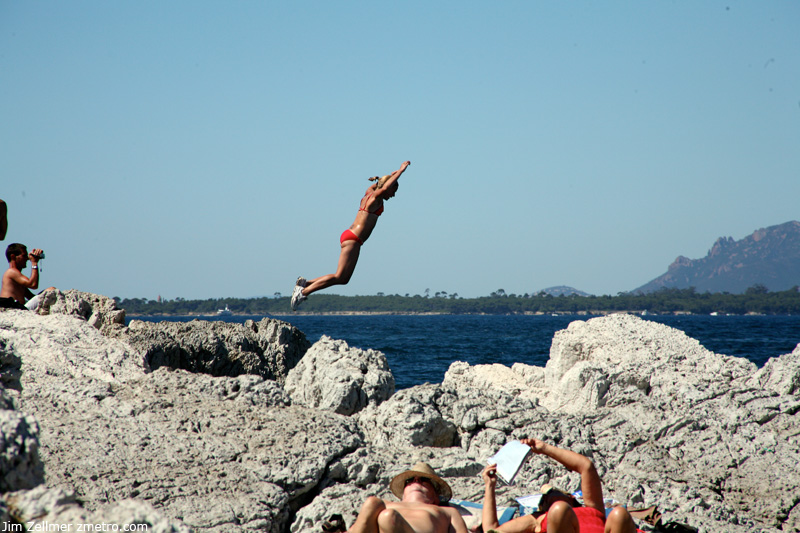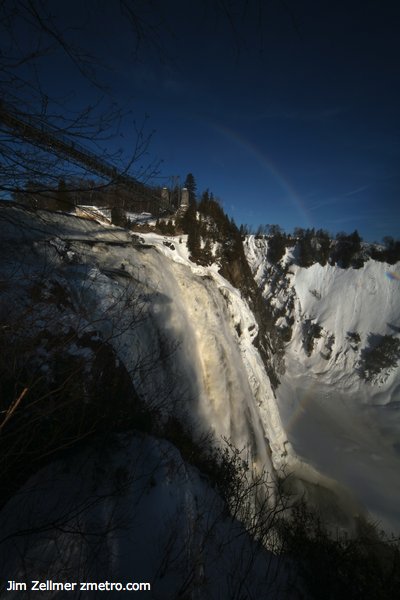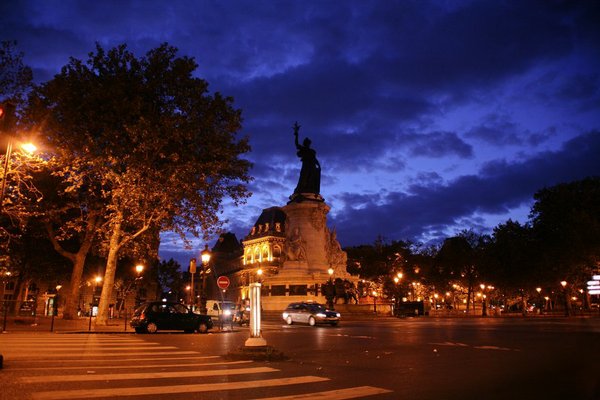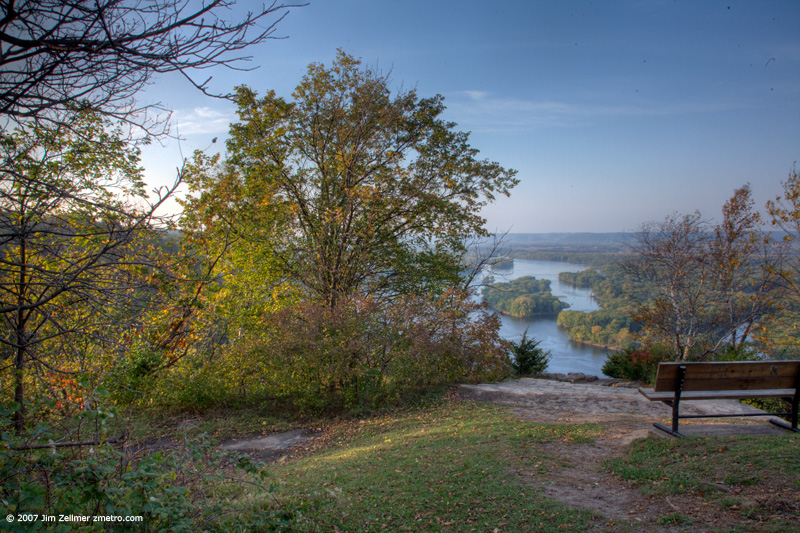Throughout the developed world, countries are tightening up border security, building fences, and raising citizenship requirements. But there are still a few places left that are willing to say: “Give us your huddled masses.”
Category: Geography
Thinking of Summer: Antibes
 This image of a woman jumping from a rocky cliff into the Mediterranean was taken from a “people’s beach” adjacent to the Hotel du Cap [Clusty search]. A useful image as we Madisonians face another snow shoveling event. Clusty search: Antibes.
This image of a woman jumping from a rocky cliff into the Mediterranean was taken from a “people’s beach” adjacent to the Hotel du Cap [Clusty search]. A useful image as we Madisonians face another snow shoveling event. Clusty search: Antibes.
satellite view
Sir Edmund Hillary: A Life in Pictures

Edmund Hillary (left) and Nepalese Sherpa Tenzing Norgay approach 28,000 feet (8,534 meters) on Mount Everest on May 28, 1953. The next day Hillary would become the first human to stand atop the world’s highest mountain, with Tenzing joining him seconds later.
Parc de la Chute-Montmorency

An impressive waterfall, particularly in Winter with ice climbers scaling the heights. Clusty search.
Bonjour Quebec:
The Montmorency Falls, cascading 83 metres down to the river below (30 metres more than Niagara Falls), are situated on a historical site of natural beauty in the Montmorency Falls Park. A cable car runs up to the Manoir Montmorency, where a restaurant, reception rooms and boutiques await the visitor.
‘Cartographia’ Showcases Maps as History, Art
Vincent Virga’s Cartographia is a rare collection of 250 color maps and illustrations drawn from the world’s largest cartographic collection at the Library of Congress. The collection spans everything from maps of ancient Mesopotamia, to maps of Columbus’ discoveries, to contemporary satellite images and maps of the human genome.
Virga says that maps are like time machines — they reveal as much about the society that created them as they do about the geography of the places they describe.
Virga discusses the collection, which he culled from the Library of Congress’ millions of maps and tens of thousands of atlases.
“The” way vs “a” way (Japan v China dept)
James Fallows offers up an interesting contrast between Japan and China.
Fall Colors: Upper Mississippi Valley
The Need for New Maps

If it were not for Rand McNally, I wouldn’t know I was in Europe, separated by an ocean from my family and friends. As far as I’m concerned, the urban culture of Berlin is closer to the culture of New York City than it is to, say, the German hinterland, to say nothing of the American hinterland. It is only through a certain way of looking at the world — from the privileged view of the orbiting satellite, in this case — that it appears the way it does. Our traditional maps, from the rough sketches of the Middle Ages to the latest map/satellite hybrids of Google, place geographic proximity above all other considerations in terms of importance.
But what about cultural proximity? Lifestyle proximity? “Energetic” proximity? What about the fact that I can take a direct flight (more or less) to any world capital, but to get to a mid-sized city in the States, I have to take two or three? It costs more money and takes more time to get from Denver to Upstate New York than it does from Denver to Amsterdam, Paris, or Milan — wouldn’t that make Denver CLOSER to the European capitals than it is to small cities in its own nation? That is my contention.
France & America

Paris Sunrise: August 2007 (taken while zooming around in a Paris cab driven by a former exchange student – who spent a year on a Iowa dairy farm).
Interesting interview with French President Nicolas Sarkozy:
“I want to tell the American people that the French people are their friends,” he said. “We are not simply allies. We are friends. I am proud of being a friend of the Americans. You know, I am saying this to The New York Times, but I have said it to the French, which takes a little more courage and is a little more difficult. I have never concealed my admiration for American dynamism, for the fluidity of American society, for its ability to raise people of different identities to the very highest levels.”
Mr. Sarkozy, who has been accused of being too enamored of all things American, said he considered France and the United States to be on equal footing and somehow better than many others, because they believe that their values are universal and therefore destined to “radiate” throughout the world. The Germans, the Spaniards, the Italians, the Chinese, by contrast, do not think that way, he said.
I had an opportunity to visit with a French Foreign Legion officer while on travel. This man mentioned that he had served with Americans in many places, including Afghanistan, Bosnia and other locales. I asked him for an impression of America after these interactions (he’s also travelled to the states with family): Resources. He said that when the Americans arrive, they always seem to have incredible resources. An well equipped base can be in service within “days”.
The Resurrection of the Lower Owens River
Healing ailing rivers is Mark Hill’s specialty. So when the tall and lean ecologist visits one of his works in progress, he’s prepared to paddle a long and sinuous route to assess the health of his watery patient.
In this case, his charge is the Lower Owens River, a 62-mile-long stretch left essentially dry in 1913 after its flows of Sierra snowmelt were diverted into the Los Angeles Aqueduct. After decades of political bickering, water was directed back into the riverbed in December, launching the largest river restoration effort ever attempted in the West.
Ecologists knew the Lower Owens would come back to life. But how fast would it rebuild itself? Which wildlife would appear first? Which plants?
Scientists have been surprised by some of the early answers, and to flesh out the details Hill recently took his first survey by kayak of the river. Hill, the lead scientist in the Lower Owens River Project, stepped into a blue inflatable 16-foot kayak, said “Let’s go,” and was soon scooting through the channel that cuts across the Owens Valley.
Highway 395 provides a gorgeous drive through the Eastern Sierra Nevada. It’s also an interesting place to observe the effects of LA’s ongoing thirst.
